Gauging the Current State of the Jihadist Movement1
In the 20th Century, the world confronted three totalitarian revolutionary movements: Nazism; communism; and fascism. Now the world is under assault from a fourth such movement whose members operate under many labels as part of global Jihad.2 These have emerged with different identities in different regions based on ethnicity and cultural background. Al Qaeda (AQ) and Islamic State (IS) ideologies remain the overarching organisations for channelizing their actions towards the perceived long term objective of the Caliphate. Violence is deemed a rational choice for Jihadists to create fear psychosis among the people of other faiths. They prefer to unleash terror attacks through unguarded frontiers where the chances of success are high. Jihadist organisations may remain dormant in one part of the world and emerge in a different avatar in other parts of the world.
Serial bomb blasts in Sri Lanka have served as a reminder that the idea of global Jihad will exploit new perils of corridors. Sri Lanka had never ever seen such a ghastly attack by Islamic terrorists. Anwar al-Awlaki, in one of his lectures had said that war for establishment of the Islamic Caliphate is “the Battle of Hearts and Minds”.3 He went on to extort the Jihadis to stay in their own countries and added, “Do not ask for anyone’s advice and do not seek anyone’s verdict. Kill the disbeliever whether he is a civilian or military, whether that country is in collusion with the West or not, for they have the same ruling. Both of them are disbelievers.”4 The threat from IS has increased manifold after the collapse of the Caliphate, especially from returning cadres from Syria, and those who stayed back on the advice of Al-Awlaki.
The attacks on Christian religious places have been going on for some time. In the recent past, deadly attacks have taken place in Philippines where 27 people were killed, similar attacks were reported from Turkey, Armenia and Syria. But the clock really started ticking when mosques in New Zealand were attacked. It was expected that Jihadis would strike back at a place of their choosing. Sri Lanka was the least likely country as there had been no obvious discord between Christians and Muslims. One can construe from the multiple suicide bomb attacks in Sri Lanka that the idea of Jihad can bounce across geographical boundaries and may not need the Fidayeen to come from IS. For them the idea of Jihad itself is compelling enough to undertake acts of terror and home grown radicalised youths are becoming more potent than the great armies. There is no single creed, ethnicity, political persuasion or nationality with a monopoly on terrorism, but Jihadists employ terrorism as one of many tools they can use to achieve their objectives.5 Weapons may kill some but the fear of Jihad and targeted killings can create social and ethnic turmoil in an entire region. The tools of violence employed by Jihadists are extremely powerful. Thirteen million people have been displaced by the ongoing conflict in Syria alone. As per a UN Report 65.6 million people worldwide were forcibly displaced from their homes owing to conflict or persecution by violent extremism.6
Modus Operandi of Jihadi Terror Organisations
The global community has misunderstood the IS in at least two respects. Firstly, the world tends to perceive Jihad as a monolith, whereas it is amorphous, defused and dispersed. Second, Osama Bin Laden was able to corporatise terror and franchise it out. It now has its footprint across the globe and in as many as 80 countries. Since declaring its ‘Caliphate’ in June 2014 till January 2018, the self-proclaimed IS has undertaken or inspired more than 140 terrorist attacks in 29 countries, other than Iraq and Syria, where its carnage has taken a much deadlier toll. Those attacks have killed at least 2,043 people and injured thousands more.7 The new age Jihadi ideologues advocate use of poison or chemical and biological weapons against population centres because they have greater impact on the enemy.8
In fact, the Jihadist footprint in Sri Lanka was diffused and the government felt that the threat from Islamist terrorists was not alarming. Such a well-planned attack would certainly require trans-national terror organisations to coordinate operations, choose targets, timings and the modus operandi of attack. Though it takes time to plan such a sophisticated complex terror attack, where all the designated suicide bombers triggered the attack near simultaneously, without allowing the security forces time to disrupt the plan of attack. It appears that the terrorists had the logistics and radicalised suicide bombers trained and motivated, ready to execute the attack, and the New Zealand mosque attack provided them with a target and a reason to attack churches and hotels on Easter to retaliate against Christians. The periodic attacks across the globe and across new frontiers is testimony in itself that the IS is not dead but diffused, disguised and dispersed.
The attack on the Christian minority in Sri Lanka has some of the typical IS and Al Qaeda trademark signatures. Modern Islamic terrorists are using a combination of strategies to remain amorphous and avoid detection. The strategies that give them high rate of success are as under:-
- Scott Stewart termed it the “Focoist Vanguard Strategy” for using terrorism to shape public opinion and raise popular support by coercion.
- Ability to create leaderless resistance.
- Choose soft targets and avoid direct confrontation to ensure a very high rate of success.
- Practicing good operational security to maintain deniability by creating a cellular structure in which small teams or cells work independently and do not have links to each other.9 In spite of some generic information the National Thawheed Jamaat (NTJ), the terror organisation suspected to be involved in the suicide bombings, was able to keep its objectives and preparations completely classified.
- Use of religion to gain loyalty of cadres and public.
Sri Lanka, a Maritime Pivot for Jihad
Over the past few years from 2012, hard line Sinhala groups such as the Bodu Bala Sena (BBS) meaning ‘Buddhist Power Force’ have been highly vocal in their opposition to the Muslim community.10 There is also an intra faith conflict between the various sects of Islam in Sri Lanka. Sufism has ideological differences with the Pakistan based Jamaat-e-Islami (JeM) and the India based Thablighi Jamaat. This conflict aggravated when Saudi Arabia based movements like the NTJ jumped into the fray. The NTJ preached Wahabism, a more radical form of Islam, propagated by Abdul Wahab which in turn created a conflict between Wahabism and Sufism the two primary schools of Islamic thought in Sri Lanka.11 The Inter-Services Intelligence (ISI) Agency of Pakistan is also pushing radicals to expand their network primarily as a leverage against India, since they can use Sri Lanka as a launch pad for creating instability in peninsular India (Kerala, Tamil Nadu and Karnataka). The National Investigation Agency (NIA) arrested two Sri Lankan Muslims (Mohammed Sakir Hussain and Suleman Hussain) and an Indian (Thameen Ansari) for spying for ISI of Pakistan. They confessed that their handlers were agents posted at Pakistani High Commission in Colombo.12 Moreover, the geo-strategic location of Sri Lanka also provides a maritime base for Jihadists to expand operations in the littoral states of the Indian Ocean Region (IOR).
Sri Lanka is important for Jihadists because it gives them access to all South Asian countries and thus is a convenient distribution point for drugs and arms trafficking. Drug cartels are using Jihadi terrorists to expand their network who in turn provide financial sustenance to terror groups and radicals. Pakistan based drug cartels are known to have linkages with Taliban and Jihadi networks. Wherever the drug cartels have their footprint, intelligence agencies must investigate the possibilities of an AQ/ IS presence and Sri Lanka is a case in point.
Jihadi Threat to Indian Sub-continent
The suicide bombings in Sri Lanka should not be considered a problem of the Island nation alone. They pose a security challenge to India, Bangladesh, Maldives and Myanmar. The modules that operate in the subcontinent are part of Al Qaeda of Indian Sub-continent (AQIS) and IS of Khorasan (IS-K). Zawahiri, who has led AQ since the death of Osama bin Laden in 2011, gave a call to establish Al-Qaida in the Indian Sub-continent. He declared that “the AQIS will aim to unite the world's Muslims to wage Jihad against the enemy, liberate occupied lands and establish the caliphate".13 Similarly, the IS-K is looking to expand its footprint in South Asia, which has the largest Muslim population in a region, anywhere in the world. The threat to India gets more pronounced due to cross-border terrorism and the proxy war perpetrated by Pakistan. Therefore, the threat to India is from the AQIS, IS and ISI of Pakistan. Due to the nexus between ISI, AQ and IS even the neighbouring countries are becoming vulnerable to the cross border terrorism sponsored by Pakistan. The module of the NTJ operating in Sri Lanka, poses a threat to entire Indian sub-continent. It could be just a coincidence, or lack of logistics that they have so far failed to carry out acts of terror in Tamil Nadu, Kerala and Karnataka. There have been some 82 active cases under investigation relating to individuals suspected of engaging in pro-ISIS activities. These include a small group of cases that involved people travelling to, or attempting to travel to Syria, Iraq, Afghanistan or Libya to join the ISIS, or those who have shown their intention online, to do so.14 Moreover, India will have to be careful, post the Balakote strike, because JeM would seek to retaliate. This retaliation could be carried out by home grown Jihadis and they could be affiliates of JeM, IS or AQIS as well.
JeM has a presence across South Asia (Pakistan, India, Sri Lanka and Bangladesh). The Jamaat, although not directly involved in terrorism, has acted as a platform and bridge between radicals and terror groups while maintaining deniability, by not directly getting involved. South Asian nations must come together to fight this menace and prevent linkages between the ideological platforms provided by various Ulemas (who have a known history of mass radicalisation) and terror organisations. In Bangladesh the Jamaat-ul-Mujahideen Bangladesh (JMB) and Ansarul Islam dominate Jihadist landscape; a faction of the former appears to have consolidated its links with the IS while the latter is affiliated with AQ’s South Asian branch.15
In Myanmar, Harakah-al-Yaqin (HaY or Faith Movement) and Arakan Rohingya Salvation Army (ARSA) have received support from AQ, Lashkar-e-Taiba (LeT) and Tahreek-e-Taliban Pakistan. HaY has been receiving support from Saudi Arabia, Pakistan and terror organisations in Bangladesh. HaY members confirm that their leaders are well connected in Bangladesh, Pakistan and, to a lesser extent, radicals of India. The Myanmar government says that its interrogations have revealed that terrorist training was provided in Bangladesh and Pakistan. 16 Similarly, the Students Islamic Movement of India (SIMI), Indian Mujahideen (IM), LeT and JeM have direct links with the ISI of Pakistan.
Despite the IM’s obvious LeT connections and training in Pakistan in sophisticated weaponry and guerrilla warfare, the IM wants to establish itself as an Indian based terror outfit.17 This will give Pakistan deniability and a narrative that IM is home grown terror outfit of India. Therefore, for India it is important that terror organisations operating in Jammu & Kashmir should not be allowed to forge links with JNB and Ansarul Islam of Bangladesh or the HaY and ARSA of Myanmar and NTJ of Sri Lanka.
Countering the Jihadi Threat
Countering the IS’s ideology requires a better understanding of how it uses religious categories, as a means to construct and maintain the social identity of its members, and how it ignites rivalries with other jihadi organisations. 18 Counter terrorism operations alone without synergy between intelligence agencies, Narcotic Bureau, Revenue Intelligence, customs department and coastal security are unlikely to defuse this threat. This threat requires the killing of the idea and preventing the radicalisation of disaffected youth. In the case of the subcontinent no single nation can fight this menace that is spreading at much faster pace than perceived by social scientists and security analysts. It would require information sharing and joint operations by regional countries to isolate and root out the doctrine of Jihad. At this stage it is important to neutralise unarmed Jihadi ideologues, on priority. Suicide bombers who have the potential to cause huge collateral damage are a product of sustained radicalisation, by unarmed Jihadis who are disguised as peaceful holy men. Case in point is Dr Zakir Naik who is now absconding. Ironically, due to vote bank politics these innocent looking religious motivators always get patronage of political parties. As per Bangladesh government agencies, two of the Dhaka attackers were "inspired by Dr Zakir Naik’s preaching. The chief of Hyderabad module of ISIS, Ibrahim Yazdhani, was also deeply influenced by Naik".19 Therefore such ideologues must be brought to book.
There is a need to strengthen the law and declare all those who even join a foreign terror group to be terrorists. Such individuals must not be given amnesty for crimes committed in other countries, especially those that are terror related. Returning IS cadres are going to be a huge liability and factor for destabilisation, if allowed to get back to the society. The Sri Lankan government could not proceed against returning IS cadres since there was no law that could convict them on terror charges. As a result, these returnees were able to establish deadly terror outfits that have caused huge irrecoverable collateral damage to the island nation.
India must spearhead the fight against Jihad in the sub-continent. It would require coordination of intelligence, use of AI and the digital mapping of population, effective surveillance of social media and periodic reviews by the intelligence heads of all regional countries. Effective surveillance of maritime boundaries and movement of suspects is essential. Since there are organisations that have links across the region, the heads and functionaries of such organisations must be kept under surveillance. It is a regional security challenge and must be addressed collectively by all nations in the subcontinent.
Enemies of Global Commons
The world was able to survive the two world wars because even though these wars caused huge collateral damage but they did not destroy the shared cultural values, history and inter faith mutual respect. Religious wars are bloody and can lead to intra state conflict that can spiral into uncontrolled chaos and displacement of population. Such a war could destroy the culture, history, civilisation, human values and even the identity of a nation. If Jihadi terrorism is not controlled, this writer believes, World War III may not be fought between states, but there is a possibility that it may be a war between the people.
The only option for the global community is to fight this war in a synergised manner by viewing Jihadis as enemies of the global commons. The big challenge today before South Asian nations is to prevent this religion based conflict. Simultaneously there is a need to dissolve the three way linkages between radical religious organisations, terror groups and drug and arms cartels.
References:
- Scott Stewart, “Gauging the Jihadist Movement, Part 1: The Goals of the Jihadists”, Stratfor, December 19, 2013.
- David A Aron, In Their own Words Voices of Jihad, RAND Corporation, 2008, p 1.
- Scott Shane, “The Enduring Influence of Anwar al-Awlaki in the Age of the IS”, Combating Terrorism Centre, July 2016.
- David Kirkpatrick, “Attacks in West Raise New Fears Over ISIS’ Influence,” New York Times, October 24, 2014.
- Stewart, n 1.
- “Record 65 million people displaced in 2016: UN”, Al Jazeera, June 19, 2017.
- Mohammed Tawfeeq, “ISIS goes global: 143 attacks in 29 countries have killed 2,043”, CNN, February 12, 2018.
- Shaykh Anwar al-Awlaki, “Targeting the Populations of Countries that are at War with the Muslims,” Inspire issue 8, 2012, p. 46.
- Stewart, n 1.
- Balasubramaniyan Viswanathan, “IS in Sri Lanka”, Geopolitical Monitor, July 12, 2016.
- Ibid.
- N Manoharan, “Sri Lanka: A New Base for ISI against India?” IPCS, Sep, 18, 2014.
- Jason Burke, “Al-Qaida leader announces formation of Indian branch”, The Guardian, September 04, 2014,
- Kabir Tanej, “The fall of ISIS and its implications for South Asia”, ORF, January 04, 2018.
- Countering Jihadist Militancy in Bangladesh, A Report by Crisis Group, February 28, 2018.
- Myanmar: A New Muslim Insurgency in Rakhine State, A Report by Crisis Group, December 15, 2016.
- Namrata Goswami, “Who is the Indian Mujahedeen”? IDSA, Backgrounder, February 3, 2009.
- André Gagné, “How the IS uses ‘virtual lessons’ to build loyalty”, The Conversation, November 6, 2017.
- Who is Zakir Naik? Were the Dhaka attack terrorists 'inspired by him? India Today, July 6, 2016.
Image Source: https://trendgossipnow.com/wp-content/uploads/2019/04/33441/isis-claim-sri-lanka.jpg

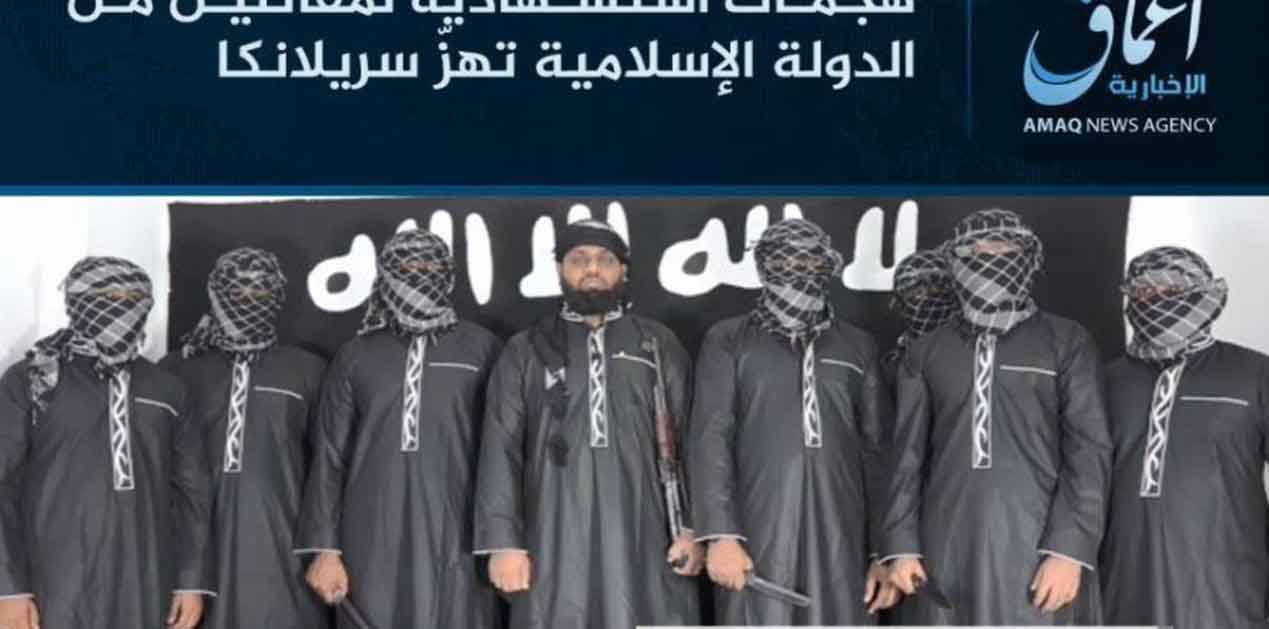


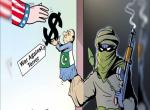
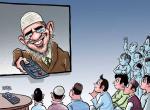

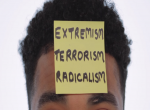
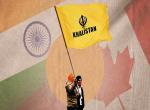
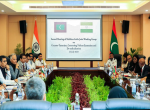
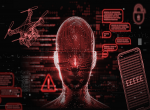
Post new comment